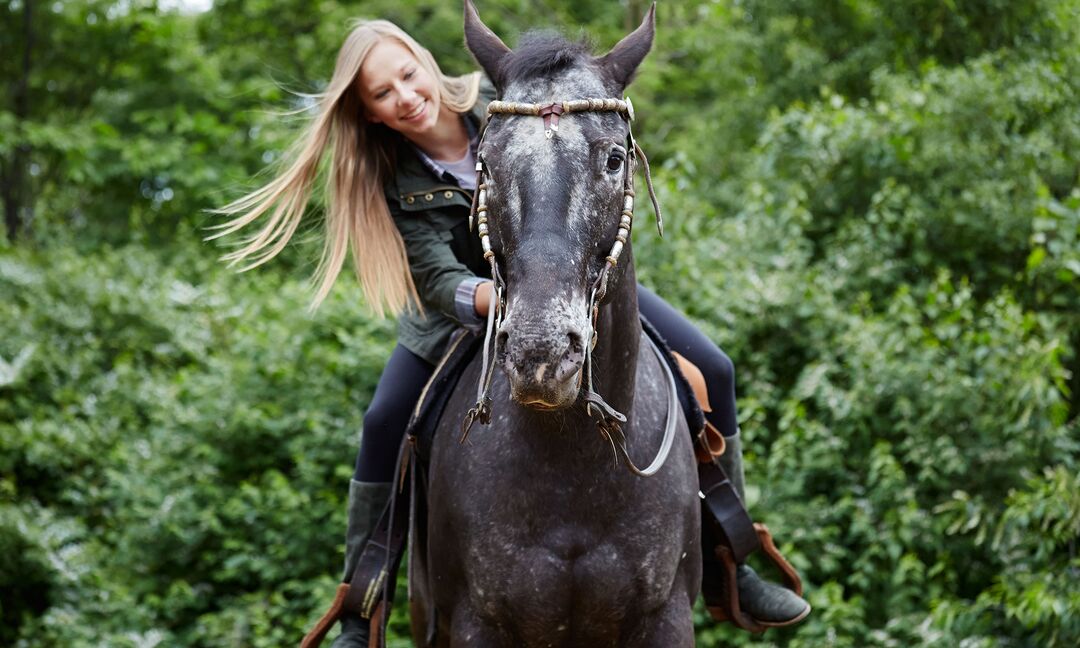GROUPON GUIDE TO SANTA-CRUZ
Can Horseback Riding Lessons Make You Happier? We Asked an Expert.
BY: Editors |Feb 25, 2019
More Things to Do Near You

Trending
Daily Admission (Ages 15+ or 2-14), Combo, or VIAP Tour (For 2 People)
400 River Road, Salinas • 6.1 mi
Sale Ends 4/27
$17.82 with_code GROUPON
Monterey Zoo

Trending
Paintball Admission with Gear Up to 93% Off
2120 San Benito Street, Hollister • 17.5 mi
86% discount_off
$4 with_code GROUPON
Paintball E-Tickets

Trending
Fuel Your Creativity: Craftsy Premium Membership for 2,000+ Classes
Sale Ends 4/27
$4.05 with_code GROUPON
Craftsy

Tee Off Together: Mini Golf and Beverages for Two or Four
95 Prescott Avenue, Monterey • 14.3 mi
Sale Ends 4/27
$32.40 with_code GROUPON
Tipsy Putt - Monterey

Chuck E. Cheese Family Play & Pizza Package!
1447 N. DAVIS RD., SALINAS • 2.1 mi
43% discount_off
Chuck E. Cheese

Join the Crew for a 3/4 Day Maritime Fishing Adventure
400 Main Street, Newport Beach
Sale Ends 4/27
$39.69 with_code GROUPON
Daveys Locker

Open Play Paintball Passes (Valid at 100+ Locations)
2120 San Benito Street, Hollister • 17.5 mi
Sale Ends 4/27
$5.66 with_code GROUPON
Play Paintball

AMC Black Tickets & Snacks – Big-screen magic across All Locations!
2190 Eastridge Loop, San Jose • 45.5 mi
25% discount_off
$5.03 with_code SHOWTIME
AMC Theatres

Up to 63% Off Admission to SeaWorld Orlando
7007 Sea World Drive, Orlando
51% discount_off
SeaWorld Orlando

Explore Wine Tasting Experience for Two and Save on Bottles
328 Ingalls Street, Santa Cruz • 29.1 mi
Sale Ends 4/27
$18.23 with_code GROUPON
MJA Winery Tasting Room

Create and Paint Your Own Ceramic Piece at Colibri Pottery Studio
1620 Old Oakland Road, San Jose
Sale Ends 4/27
$8.75 with_code GROUPON
Colibri Pottery Studio

2-hour Create and Destroy Pottery Session for One or Two at Colibri Pottery Studio (Up to 40% Off)
1620 Old Oakland Road, San Jose
Sale Ends 4/27
$58.32 with_code GROUPON
Colibri Pottery Studio

Up to 51% Off SeaWorld & Aquatica San Antonio!
10500 SeaWorld Dr., San Antonio
51% discount_off
SeaWorld & Aquatica San Antonio

Save up to 55% On SeaWorld San Diego
500 Sea World Drive, San Diego
55% discount_off
SeaWorld San Diego

Rise to the Challenge – Register for Spartan Race or Tough Mudder
501 California 68, Salinas • 0.5 mi
52% discount_off
$80.10 with_code RACE25
Spartan Race & Tough Mudder
More Kids Activities

Trending
Daily Admission (Ages 15+ or 2-14), Combo, or VIAP Tour (For 2 People)
400 River Road, Salinas • 6.1 mi
Sale Ends 4/27
$17.82 with_code GROUPON
Monterey Zoo

Trending
Tee Off Together: Mini Golf and Beverages for Two or Four
95 Prescott Avenue, Monterey • 14.3 mi
Sale Ends 4/27
$32.40 with_code GROUPON
Tipsy Putt - Monterey

Trending
Join the Crew for a 3/4 Day Maritime Fishing Adventure
400 Main Street, Newport Beach
Sale Ends 4/27
$39.69 with_code GROUPON
Daveys Locker

Chuck E. Cheese Family Play & Pizza Package!
1447 N. DAVIS RD., SALINAS • 2.1 mi
43% discount_off
Chuck E. Cheese

AMC Black Tickets & Snacks – Big-screen magic across All Locations!
2190 Eastridge Loop, San Jose • 45.5 mi
25% discount_off
$5.03 with_code SHOWTIME
AMC Theatres

Up to 63% Off Admission to SeaWorld Orlando
7007 Sea World Drive, Orlando
51% discount_off
SeaWorld Orlando

Up to 51% Off SeaWorld & Aquatica San Antonio!
10500 SeaWorld Dr., San Antonio
51% discount_off
SeaWorld & Aquatica San Antonio

Save up to 55% On SeaWorld San Diego
500 Sea World Drive, San Diego
55% discount_off
SeaWorld San Diego

Create and Paint Your Own Ceramic Piece at Colibri Pottery Studio
1620 Old Oakland Road, San Jose
Sale Ends 4/27
$8.75 with_code GROUPON
Colibri Pottery Studio

Open Play Paintball Passes (Valid at 100+ Locations)
2120 San Benito Street, Hollister • 17.5 mi
Sale Ends 4/27
$5.66 with_code GROUPON
Play Paintball

Up to 58% Off Whale Watching Cruise from Davey's Locker
400 Main Street, Newport Beach
Sale Ends 4/27
$10.53 with_code GROUPON
All Fees Included: Davey's Locker Whale Watching

Up to 25% Off on Ferris Wheel / Panoramic Wheel at Skystar Ferris Wheel
2860 Taylor St., San Francisco
25% discount_off
SkyStar Wheel

Low Impact Paintball Admission with Gear from Paintball Tickets
2120 San Benito Street, Hollister • 17.5 mi
86% discount_off
$4 with_code GROUPON
Low-Impact Paintball E-Tickets

Explore Piano, Sax, Guitar & Drum Lessons with Flexible Options
33320 1st Way S, Federal Way
Sale Ends 4/27
$23.49 with_code GROUPON
LIVE MUSIC ACADEMY

Up to 90% Off Open-Play Passes from Paintball USA Tickets
2120 San Benito Street, Hollister • 17.5 mi
Sale Ends 4/27
$9.71 with_code GROUPON
Paintball USA Tickets





